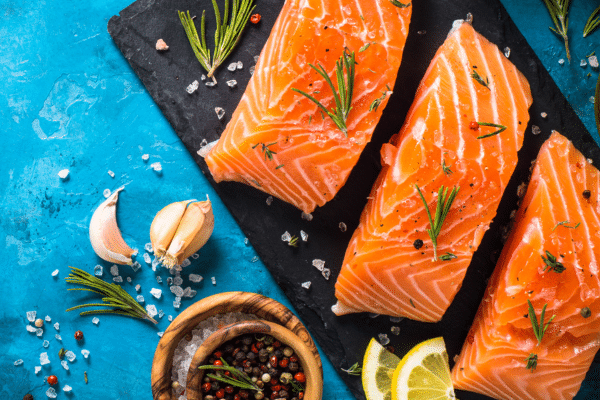Experts suggest that consuming fish once a week can reduce the risk of cardiovascular conditions by 40%. According to the AHA (American Heart Association), consuming two servings of fish weekly promotes better cardiovascular health, for everyone including diabetes patients. Below is a list of seafood you can add to your diet on a regular basis for a daily dose of good fat, protein, Omega-3 fatty acid and a variety of beneficial nutrients.
List of seafood for diabetes
Salmon
Salmon is an excellent source of omega-3 fatty acids, and healthy fat that reduce inflammation in the blood cells. Omega-3 fatty acids promote eye health, brain development, and better heart function. In addition to blood sugar regulation, salmon improves the body’s ability to use insulin.
Salmon contains 5.4 grams of fat, 121 calories, and 17 grams of protein.
Tilapia
What makes Tilapia a good option for diabetes patients is the absence of carbohydrates. It contains selenium that assists in balancing blood sugar levels.
Tilapia contains 128 calories, 0 grams of carbs, 3 grams of fat, and 26 grams of protein.
Herring
Herring is a great source of vitamin D. It is also packed with eicosapentaenoic acid (EPA) and docosahexaenoic acid (DHA). These fatty acids promote heart health and improve brain function.
Herring contains 17.96 grams of protein, 9.04 grams of fat, 158 calories, and 0.5 grams of dietary fiber.
Mackerel
Mackerel is loaded with protein, vitamin B12, and iron. It also contains omega-3 fatty acids, which reduce the risk of cardiovascular disease and stroke.
Mackerel contains 189 calories, 11.9 grams of fat, 89 milligrams of sodium, and 19 grams of protein.
SardinesSardines are a rich source of omega-3, calcium and vitamin D. All these nutrients make this fish extremely beneficial for diabetes management.
Sardines contain 191 calories, 22.7 grams of protein, 10.5 grams of fat, and zero carbohydrates.
Tuna
Tuna is high in omega-3 fatty acids EPA and DHA, vitamin B6, and vitamin B12. It also prevents inflammation and helps in blood sugar control. Experts consider tuna as a safe snacking option.
Tuna contains 80 calories, 2.5 grams of fat, 140 mg of sodium, and 13 grams of protein.
Cod
This high-protein fish is perfect for blood sugar regulation. It has little saturated fat and a good amount of omega-3 fatty acids. It also contains vitamin D, vitamin B12, and vitamin B6. Cod contains 90 calories, 79.5 grams of sodium, 1 gram of fat, and 20 grams of protein.
Doctor’s Recommendation
it is best to consume sardines and salmon if and only if the salmon is wild-caught. The reasoning behind this is that those fish have the highest omega-3 and nutritional content and have the least amount of heavy metal content relative to fish like tuna. Finally, tilapia is a fish that eats its own feces and is not approved as a food in many countries.



